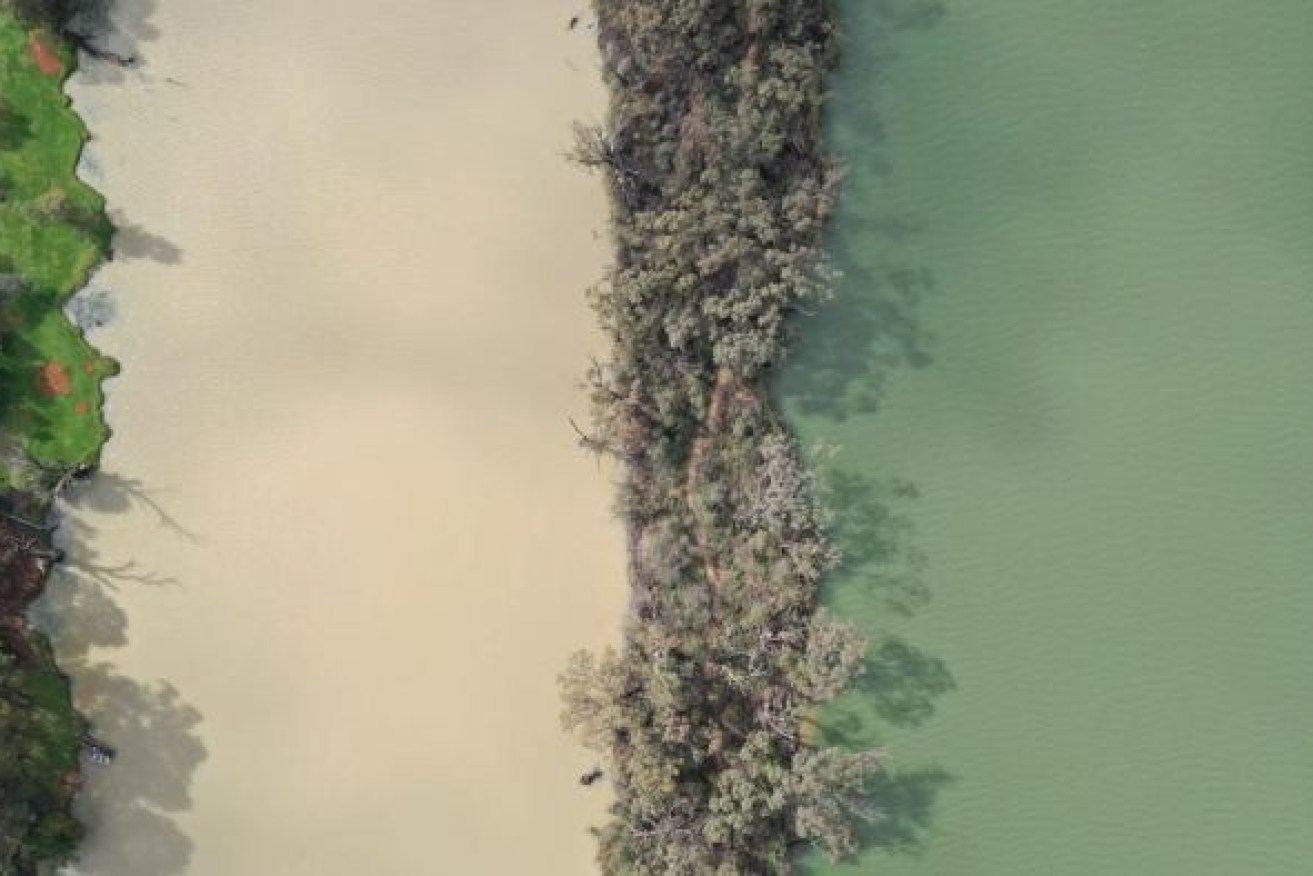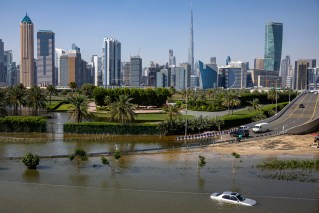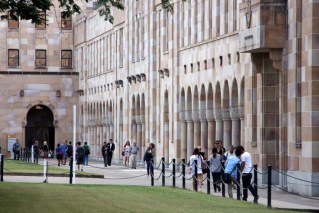All the rivers run: Darling meets Murray for first time in two years
After wonderful drenching rain in recent months, the Darling River is flowing again for the first time in two years.

The dirty Darling has been reacquainted with the mighty Murray. Photo: Array
And as with most things about the Murray-Darling system, what happens next is just about as clear as the Darling itself.
Once you wade through the bureaucracy, there is both good and bad news.
No large-scale fish kills
Just getting the water down the Darling has been fraught.
The stakes were high, with everyone keen to avoid a repeat of the infamous death of a million fish triggered by brief natural flows in late 2018.
The rain that caused the initial flow started in outback Queensland in January and had hundreds of kilometres to traverse over largely dry riverbeds, picking up tonnes of debris as it moved into New South Wales and down to Menindee, the first big opportunity to control the flow.
So rather than just letting the water go, the strategy was to first siphon off some of the poorest-quality water into lakes Tandure and Pamamaroo before allowing Lake Wetherell to fill enough to ensure a large first pulse of high-quality water down the Lower Darling.
“One of our priorities was to minimise the impact on native fish species, as well as delivering town water and water to long-suffering landholders in the Lower Darling,” said Tony Webber from Water NSW.
“We worked very closely with the Department of Fisheries and local landholders, and the result being there was a near absence of fish kills during that operation.
“I think that’s the good-news story that went on behind the scenes.”
Once the water arrived at Wentworth, the Murray-Darling Basin Authority (MDBA) lowered the weir pool there to help push the lower-quality water through and be diluted into the Murray.
The releases from the Menindee Lakes have since been reduced to 300 megalitres a day, with plans to drop it to 200 megalitres.
“That’s to reach the optimum point of providing a constant flow for the landholders’ communities in the Lower Darling, but to hold back as much of this precious water as possible and thereby prolong the benefits to landholders, those communities and the environment,” Webber said.
Are the Menindee Lakes going to fill?
The short answer is no.
The current inflows are expected to be around 600 gigalitres, well short of the 1731-gigalitre capacity of the lakes.
(For those using the official Australian measurement, one Sydney Harbour is approximately 500 gigalitres)
The plan is to keep using lakes Pamamaroo and Wetherell before allowing overflow into the southern lakes.
“We need to store it as efficiently as possible, and that means, where possible, retaining the water in the upper lakes and minimising the surface area, which is the challenge with the Menindee Lakes,” Webber said.
“They are very, very large but comparatively shallow lakes.”
So, not great for avoiding evaporation.
Return of allocations
Under ordinary circumstances, the MDBA allocates a set amount of water to South Australia, Victoria and New South Wales; the states then distribute their allocations to individuals.
But there is a clause for when the Darling is in drought.
When the Menindee Lakes fall below 480 gigalitres, the Darling’s flows are removed from the MDBA’s allocations and left up to the management of New South Wales.
In this case, the agency that makes the call is the NSW Department for Planning, Industry and Environment.
If you track down the right department it is good news.
Brian Graham, the department’s allocations manager, said there was a priority order in which it assigned water.
“So if there’s an available amount of water, first, you allocate to towns and then domestic and stock users, then you are obliged to provide water to high-security users, and then if there’s any water left over, it starts to accrue to general-security water users,” he said.
In the Lower Darling, all those higher-priority licences now have a full allocation for the year and the general-security users now have a 30 per cent allocation.
It’s a huge advance from before the rain, when general-security users were at 0 per cent allocation, and even water allocated to account holders was frozen and reassigned to meet critical needs.
“The recovery has reached such a point where most restrictions have been eased and water that had been allocated and was inaccessible is now available for use,” Graham said.
This applies across New South Wales with the exception of the Macquarie and Lachlan river systems, which are still experiencing shortages.
What will the Darling’s flow mean for the Murray?
In the short term, not a lot.
While the current flows are a big deal for the Darling, they are tiny compared to the flows going down the Murray, according to Andrew Reynolds, the MDBA’s director of river management.
“The current release [in the Darling] is in the order of 250 megalitres a day … the current flow in the Murray River is about 5,200 megalitres a day at Wentworth,” he said.
Besides, the water in the Darling remains outside of the MDBA’s control until the Menindee Lakes reach 640 gigalitres, giving the system a chance to at least partially recover from drought before potentially returning to it.
You might consider that a good reason to let the Darling flow, but Graham said that was not the case.
“We use water as effectively and as efficiently as we possibly can,” he said.
“Our focus at this point, particularly after being through what we have with the Lower Darling, is to make sure that we can keep that Lower Darling running for as long as we possibly can.
“We are just keeping the minimum flow needed to maintain connectivity with the Murray.”
Graham said the lakes were unlikely to fill beyond the 640-gigalitre trigger point based off the current inflows.
But at least it’s a start, and with a wetter-than-average winter on the cards, there could be more to come.
– ABC / Kate Doyle












